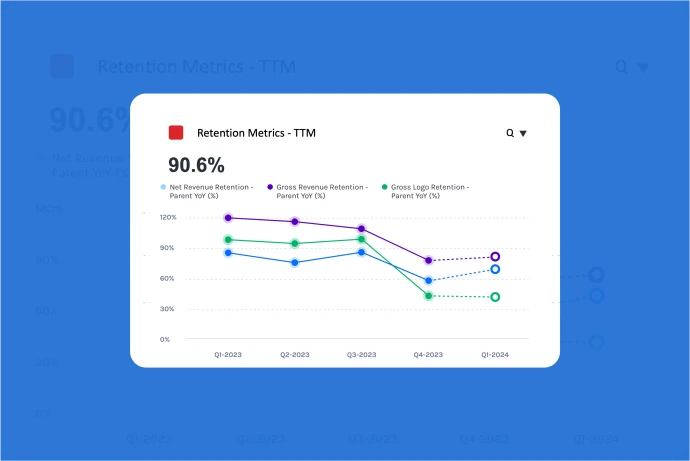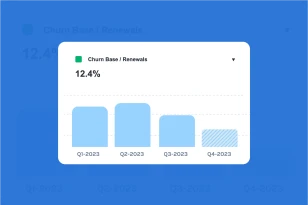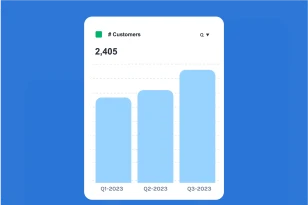What is Gross Revenue Retention Rate?
Gross Revenue Retention (GRR) is a critical metric that measures the percentage of revenue retained from existing customers over a specific period. Unlike the Gross Logo Retention, which focuses solely on the number of customers retained, the Gross Retention Rate considers the revenue retained from existing customers, including any downgrade and churn.
Why is it important to monitor Gross Revenue Retention?
Gross Retention Rate is a crucial indicator of the company’s ability to maintain its revenue streams from the existing customer base. A high Gross Retention Rate implies strong customer loyalty, satisfaction, and continued value delivery, contributing to stable and predictable revenue streams. On the other hand, a low Gross Retention Rate may signal potential issues in customer satisfaction, product value, or service quality, emphasizing the need for improvements and corrective actions.
How do you calculate Gross Revenue Retention?
GRR Formula
(Starting ARR – Churn ARR – Downgrade ARR) / Starting ARR
It can be measured for MRR and over different time periods. The most used frequency is Trailing Twelve Months.
How do you improve Gross Retention Rate?
Improving Gross Retention Rate (GRR) is crucial for the sustained growth and success of a SaaS company. Enhancing customer satisfaction and ensuring a positive customer experience can contribute significantly to improving GRR. Here are some effective strategies to consider:
- Efficient Onboarding Experience: Provide a fast and efficient onboarding experience for new customers, offering guidance, training, and support tailored to their specific needs and goals.
- Proactive Customer Support: Offer proactive customer support through various channels, including live chat, email, and phone support, to address customer issues and concerns promptly.
- Regular Product Updates and Enhancements: Continuously update and enhance your product based on customer feedback and changing market trends, ensuring that it continues to meet and exceed customer expectations.
- Customer Engagement Programs: Implement customer engagement programs, such as user communities, forums, and webinars, to encourage customers to interact with each other and with your team, fostering a sense of community and loyalty.
- Customer Success Management: Invest in a robust customer success management program to ensure that customers achieve their desired outcomes and goals with your product. Provide ongoing support, guidance, and resources to help customers maximize the value they get from your product.
- Regular Customer Feedback Surveys: Gather feedback from your customers regularly through surveys and feedback forms to understand their pain points, preferences, and areas for improvement. Use this feedback to make data-driven decisions and improvements.
- Customer Loyalty Programs: Implement customer loyalty programs and referral programs to incentivize existing customers to continue using your product and to refer others, fostering a sense of loyalty and satisfaction.
- Continuous Monitoring of Churn Signals: Monitor customer behavior and engagement metrics closely to identify any early signs of potential churn. Address any issues promptly to prevent customers from leaving your platform.
- Data-Driven Decision-Making: Utilize data analytics to make informed decisions about product development, customer engagement, and retention strategies. Analyze customer data to identify trends and patterns that can help you improve the overall customer experience.
By implementing these strategies, you can improve your Gross Retention Rate and foster long-term relationships with your customers, leading to increased customer loyalty and sustainable revenue growth.





